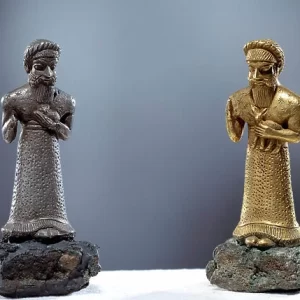Walter P. Chrysler’s up-market Imperial made its debut in 1926, just two years after the marque was founded. By the close of that year, Chrysler was ranked seventh in U.S. production. The early Chrysler’s, produced in the old Chalmers plant in Detroit, were medium-priced, six-cylinder cars that were innovative and offered better-than-average performance. A four and a smaller six-cylinder model was later added to the lineup, along with the Imperial catering to the luxury car segment.
In 1931, Chrysler entered the multi-cylinder wars with the introduction of two models powered by straight-eight engines – the CD Eight and the Imperial CG Eight. The 384.84 cubic-inch nine-bearing engine offered 125 horsepower at 3,200 RPM, which gave the Imperial a top speed in excess of 95 mph. They were fitted with hydraulic brakes, hydraulic shock absorbers, and adjustable seats and steering column. The smooth operation was achieved through Chrysler’s ‘Floating Power’ engine mounting and a 4-speed synchromesh manual transmission
The all-new 1931 Chrysler Imperial was low-slung and streamlined with a design inspired by the front-wheel-drive Cord L-29 that Errett Lobban Cord had introduced in 1929. Alan H. Leamy, the designer of the L-29, provided input to the Imperial design, during a hiatus from his employment as chief designer for Auburn and Cord automobiles. Design features included the swept-back radiator shell, a windshield that was positioned far back on the chassis, the long hood/cowl line, and sweeping front fenders.
In early 1932, the new Series CH line replaced the Series CG Imperial. They had a double-drop ‘girder-truss’ frame, a vee-type windshield, door-type hood ventilators, Floating Power, power-assisted brakes, vacuum-operated clutch, and an increase in wheelbase size from 145- to 146-inches.
The new Imperial was available in two sub-series, with the standard line wearing production Briggs-built bodies. The Custom CL line had six cataloged semi-custom built bodies, finished to order. All (except one) of the Imperial ‘catalog custom’ were built by LeBaron. The CL had a longer hood, extending from the radiator shell back to the base of the windshield.
For 1933, Chrysler would produce just 151 examples of the Imperial, the final year of its production. The CL was carried forward and received only minor changes. A highlight is that one of the nine LeBaron Convertible Roadsters was selected as an official pace car for the Indianapolis 500 that year.
In 1934, the Imperials were replaced by the radical Airflow.
















































